Anyone who’s dipped their toes into the Limestone Coast will tell you there’s more than meets the eye…
With a rich volcanic landscape that’s studded with mysterious sinkholes, underground caves, pristine ponds and lush lakes, heading to the local pool is something few ever forget. Here’s a list of local swimming and diving spots to help you on your way!
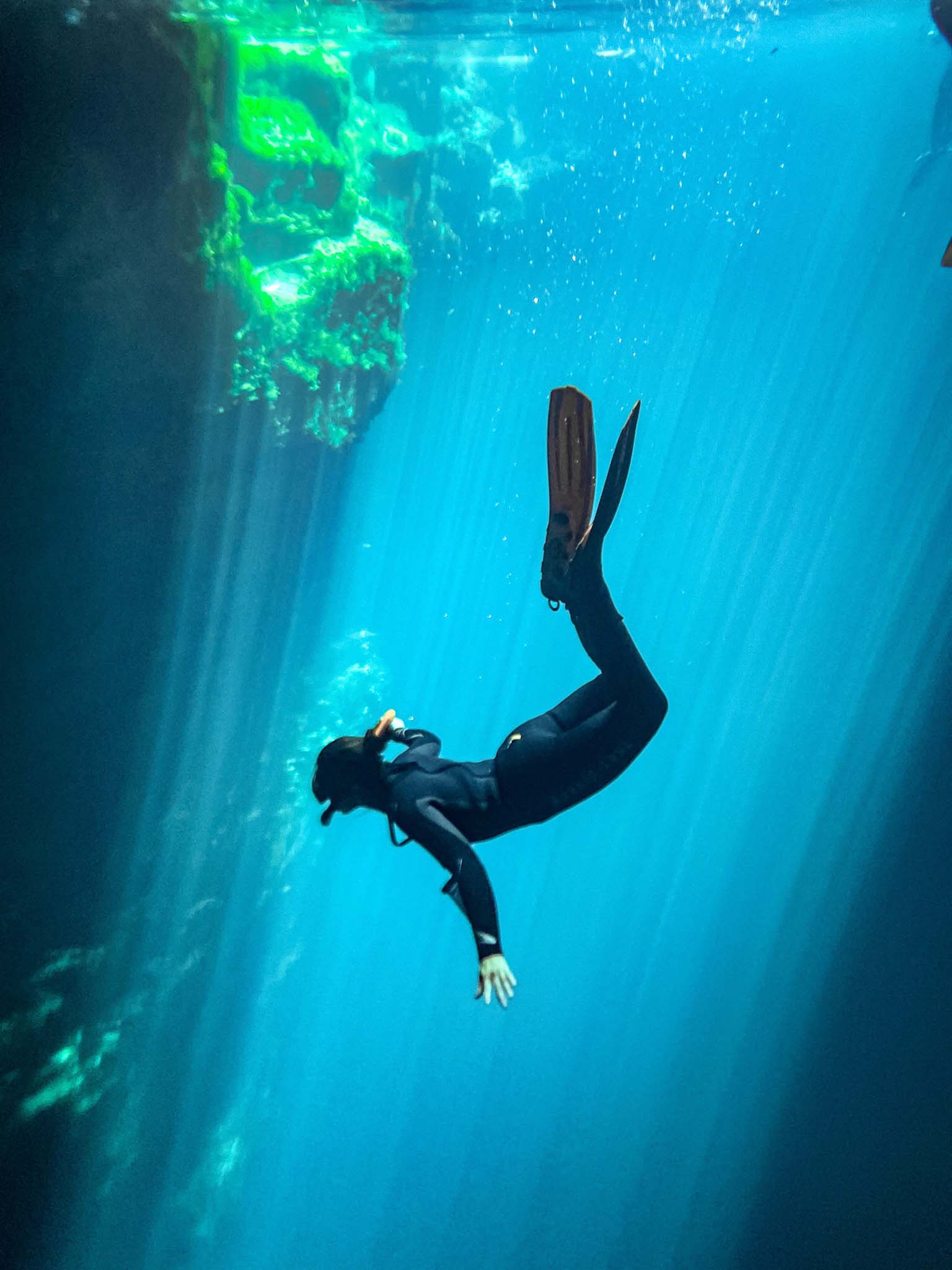
Kilsby Sinkhole.
Just 14 kilometres south of Mount Gambier, Kilsby Sinkhole is as sly as it is surreal. In fact, to the untrained eye, it would be all too easy to simply drive by the lush paddocks under which this local icon sits hidden away from prying eyes, but those who visit will have it etched in their minds forever.
Sitting deep under the soils of a working sheep farm, this place was once little more than a watering hole on the local stock route, but having been nurtured by the Kilsby family for four generations, these days it’s become one of the globe’s most sought-after freshwater diving experiences.
The only site of its kind in Australia that welcomes snorkellers, freedivers and Open Water certified scuba divers under the supervision of licensed and industry-certified guides, this giant chasm descends 65 metres and is revered by those in the know, with stunning water clarity delivering almost other-worldly visibility.
If you’re the intrepid kind who’s into strapping on a tank and getting yourself in deep - or hey, maybe even the freediving sort - you’ll need to reach out to one of the site’s registered Licensees to chat through specifics and arrange a booking – just ensure you’re SCUBA certified first. Times vary according to each operator, but they’ll supply all equipment and stay with you every step of the way as you unearth a subterranean showcase filled with timeless topography and sneaky little passages. If you’re keen to make the most of it, the middle of the day is prime time to see the sunlight as it streaks through the abyss, creating a unique looking glass to the world above where birds fly and clouds dance across the surface.
Of course, if you're keen to see what all the fuss is about without the diving creds - you’ll be glad to know that those aged over 12 can still throw on a snorkel and mask to catch the show in the main ‘lake’ area too. While exact times vary, you’ll need to book your two-hour snorkelling tour ahead of time and while you’re welcome to bring your own gear they can also deck you out on-site (oh, and wetsuits are essential, by the way – water sits at a cool 15C year-round).
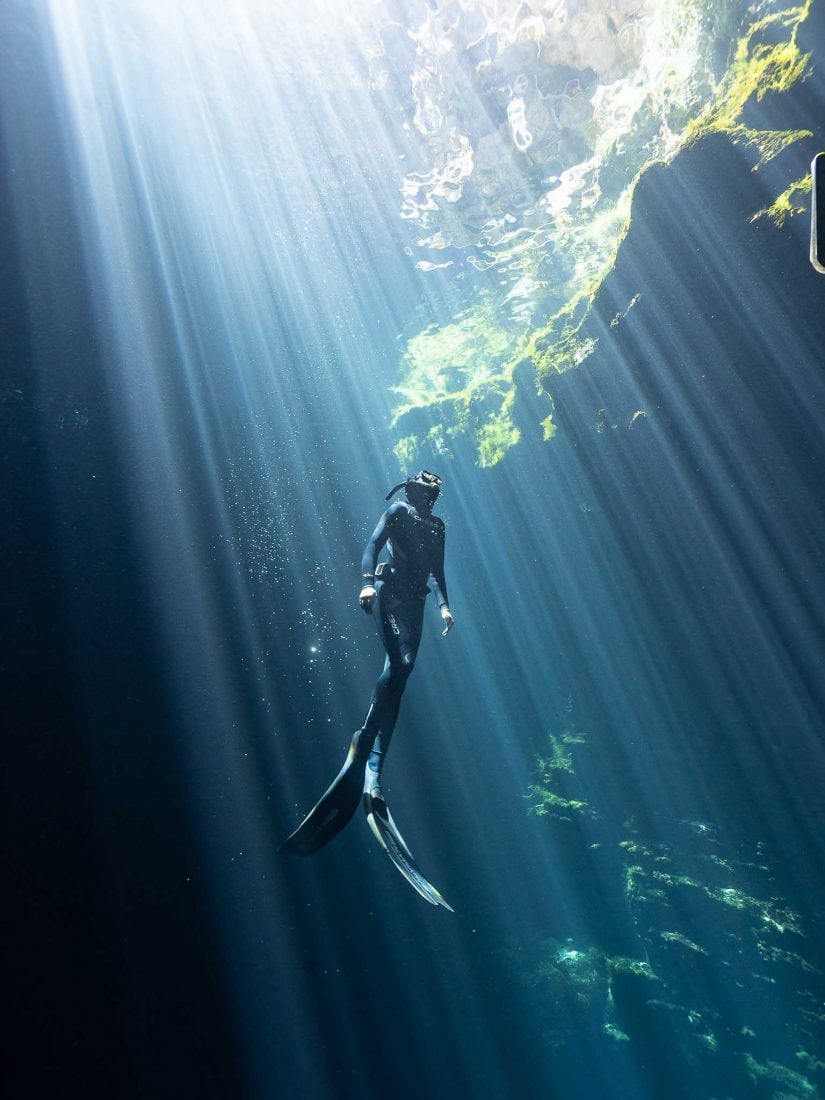
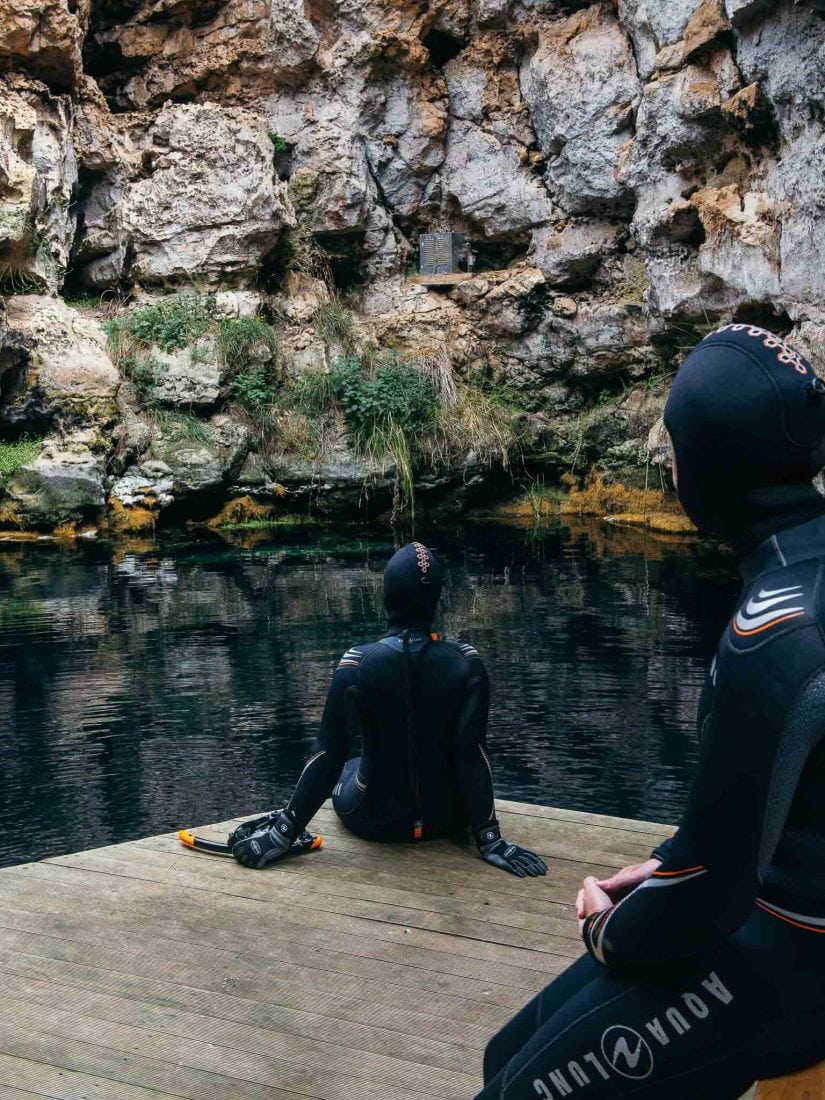
If you’re heading here with mates, you’ll also want to be mindful that group sizes are restricted to eight - and while there’s no need to be an Ironman, a general level of fitness is a must - as is the ability to swim (duh)! In between paddles duck-dives, be sure to keep your eyes peeled for ‘Turtie’ the sinkhole turtle who appears to be living his very best life!
If getting wet just isn't your bag, you can stay dry on the one-hour guided Sinkhole Tour and learn all about the sinkhole’s intriguing backstory, including the secret role it played in Australia's military history. Kids under 10 years are free, as long as they’re accompanied by adults – just keep them close when you’re on the pontoon.
Oh, and speaking of grown-ups… If you’re in need of liquid nourishment while you’re here, don’t pass up the opportunity to grab a bottle of Sinkhole Gin, which as well as being made from the pristine limestone-filtered water you’ve been swimming in is about as crisp and clear as the experience down below!
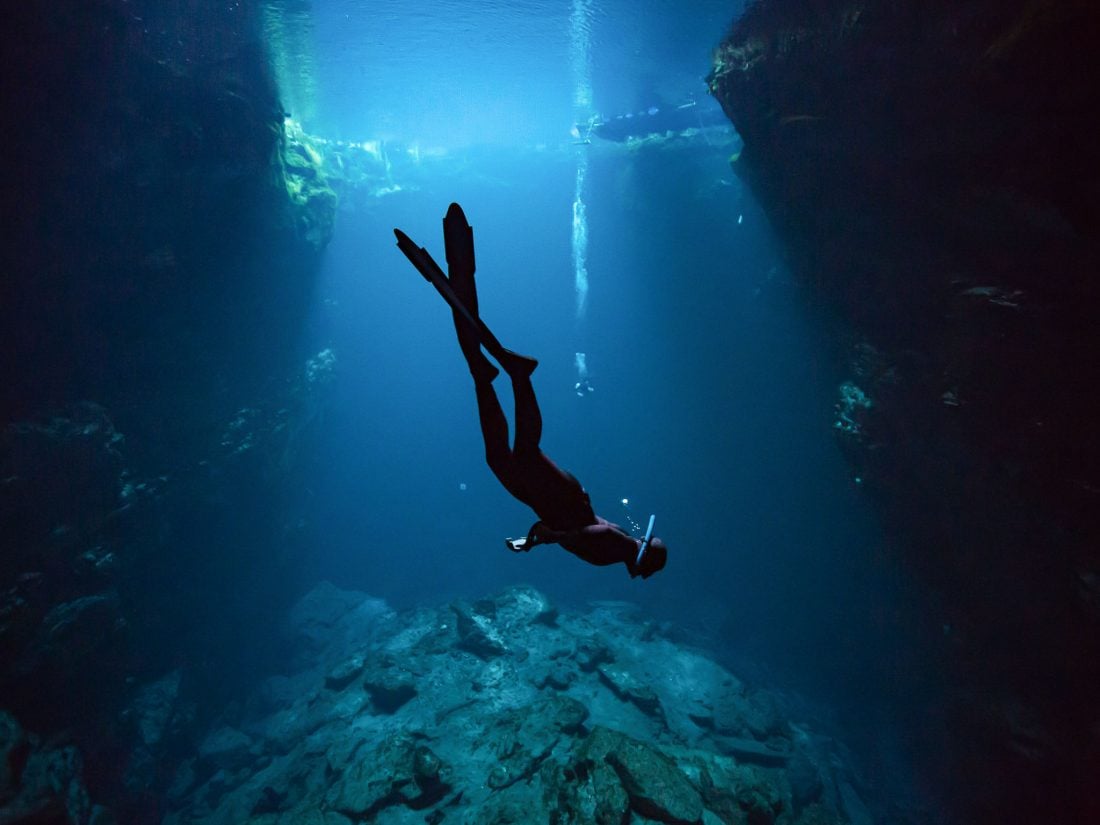
Ewens Ponds Conservation Park
Please be aware that opening times for water activites can change. Check park closures and alerts before planning your visit.
With water so clear it’s like snorkelling through air, the magical underwater gardens of Ewens Ponds Conservation Park genuinely have to be seen to be believed... This local gem sits 10 kilometres east of Port MacDonnell and is revered by those in the know, with a series of three large freshwater springs (each around 10 metres deep) delivering spectacular clarity and colour. A leafy subterranean wonderland, these inter-connected ponds have been continuously fed by limestone filtered springwater over thousands of years, resulting in one of the glassiest plunge pools on the planet.
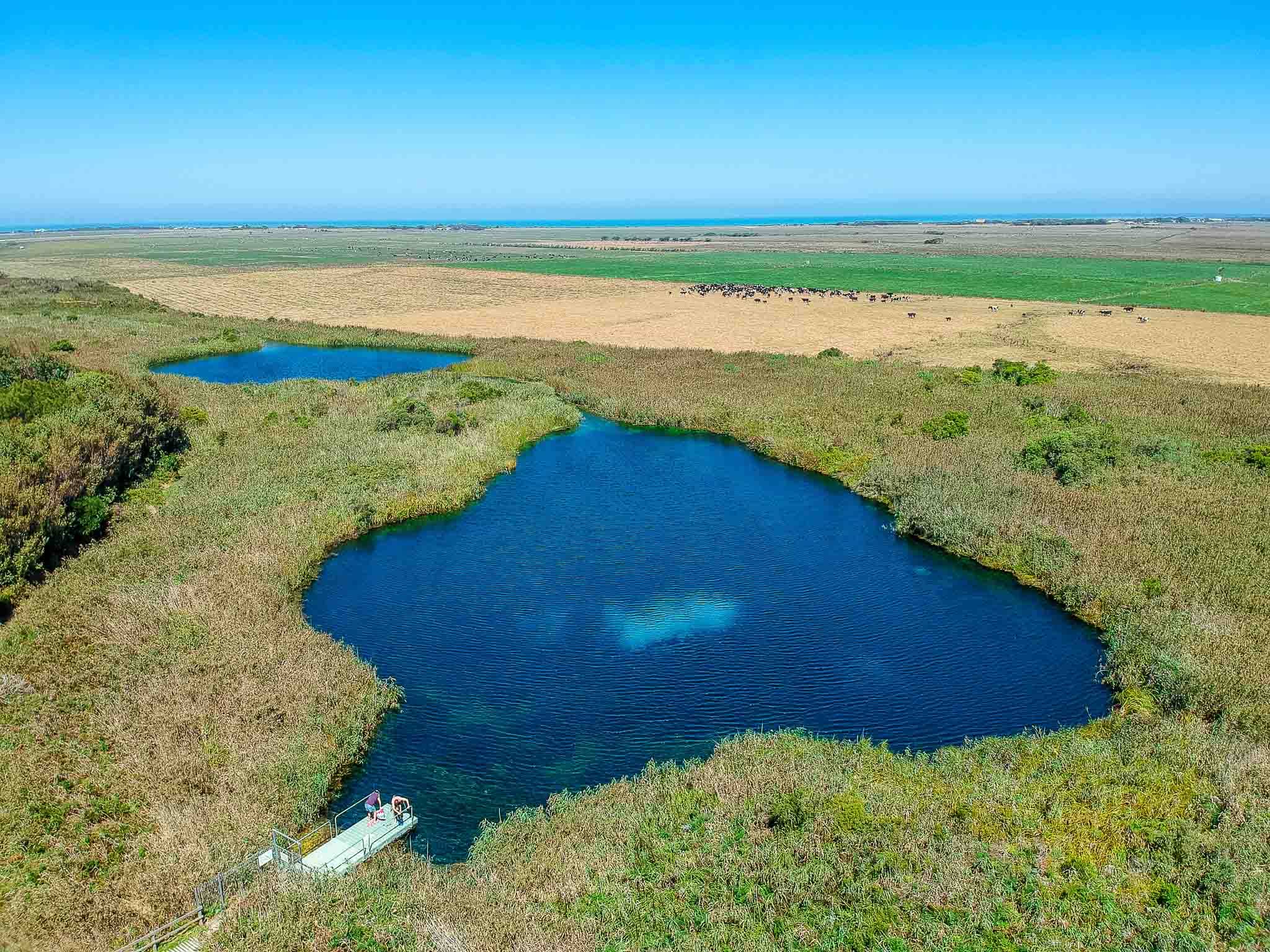
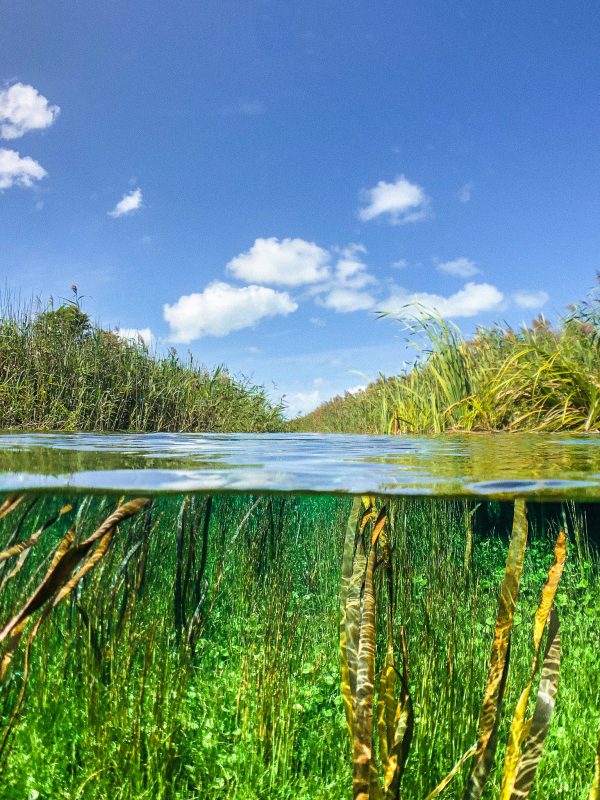
With visibility of up to 80 metres and water temperatures hovering around 10-15C, there’s little doubt it’s one of those places that will seriously take your breath away - quite literally! In fact, if you’re wondering, yes this is definitely full-length wetsuit territory – in fact, it’s a rule for entry – but if you don’t have one handy, don’t stress – the friendly crew at Allendale East General Store and Dive Shop have you covered, along with the other mandatories like fins, face mask and a snorkel (it’s also worth checking out the local street art while you’re in town).
Suitable for all ages (5+ years) and abilities, a general level of confidence in the water (like, can you swim 25 metres?) should be enough to ensure everyone enjoys the snorkelling experience – as long as the kids are well supervised. For those unsure about their ability, especially little ones, it’s also worth grabbing a lifejacket (or even a pool noodle) to really float their boat.
Whether you’re scuba diving (accreditation standards apply) or snorkelling and keen to jump into this subterranean stunner you'll need to be mindful of seasons (avoid the annual closure from 1st September to 30th November) before booking your one-hour dive or snorkelling permit via National Parks South Australia. It’s also worth noting that you’re only allowed two permits per day - so if you think you might take a little longer (because hey, it’s pretty awesome), consider booking them back-to-back to snag yourself some extra swim time. Oh, and there’s an order of play here folks – entry is always via the pontoon at the first pool, and exit at the third – no going against the flow, y’know?
Speaking of which, as you drift your way from pond to pond you’ll likely notice a gentle current that pushes things along just nicely, with the narrow connecting channels acting as Mother Nature’s conveyor belt.
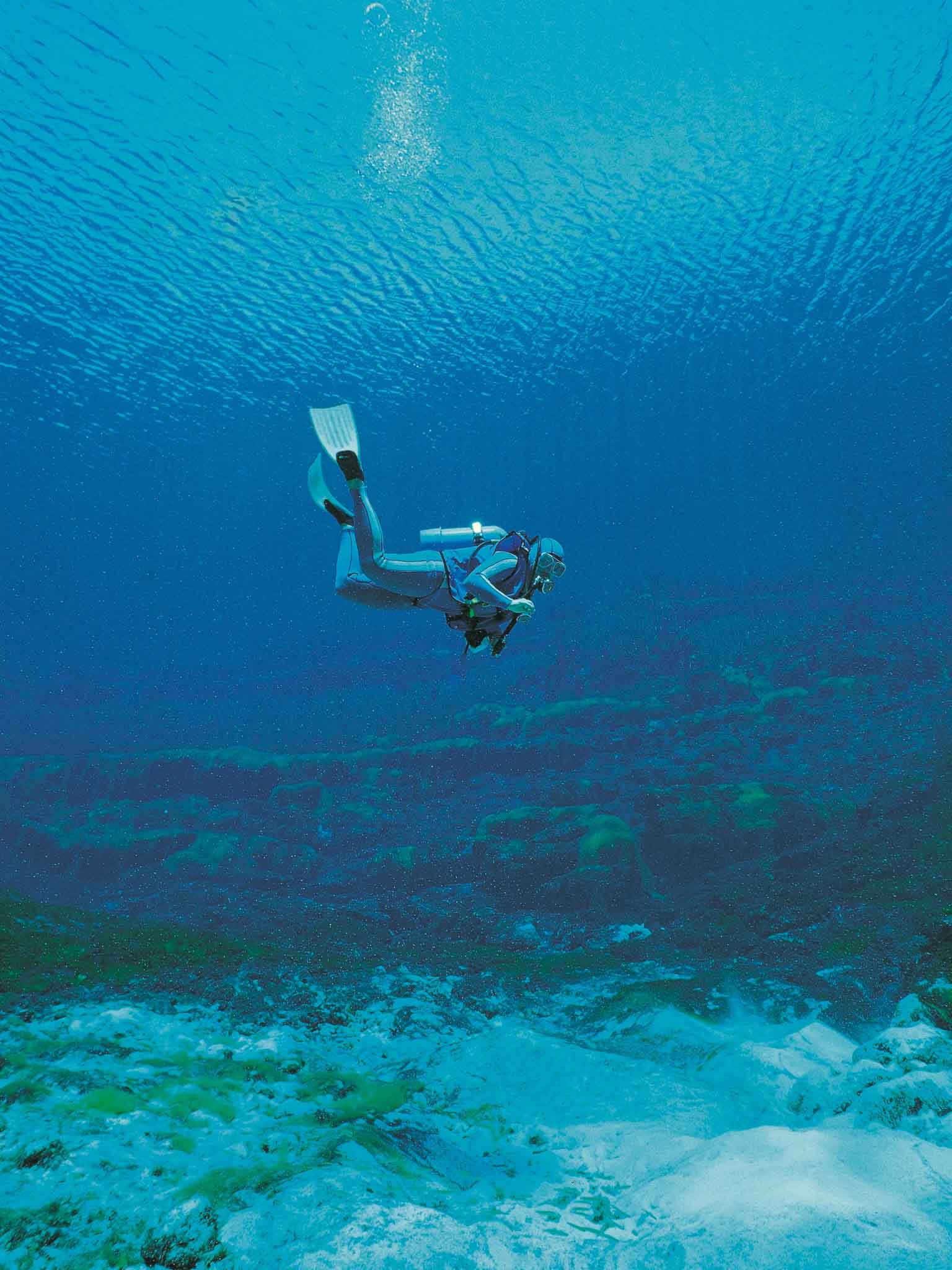
As you drift your way through, you’ll find underwater plants that don’t grow anywhere else in the world - and many of them photosynthesising, with a steady stream of oxygen bubbles rising up to the surface. If that’s not enough to feed your inner Attenborough, it’s also worth keeping your eyes peeled for Glenelg Spiny Freshwater Crayfish and the super-rare Ewens Pygmy Perch, which are almost exclusive to these waters.
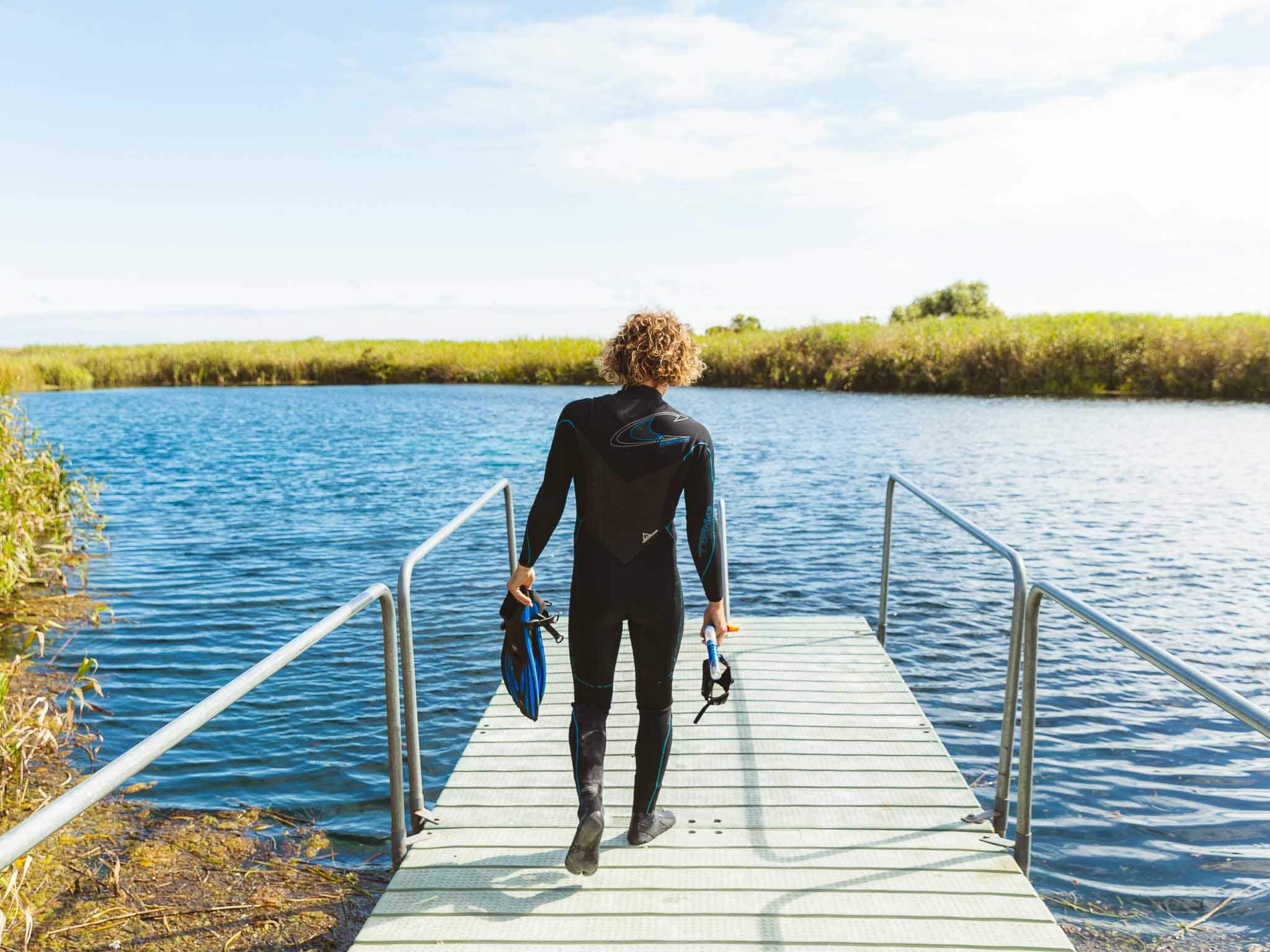
Little Blue Lake
Plonked inconspicuously between two dormant volcanoes (Mount Schank and Mount Gambier) and just a stone’s throw from its bigger, bluer brother (that’s the Blue Lake, BTW…), Little Blue Lake has a larger than life profile, with fun-loving families, van-lifers, thrill seekers and loved up couples all flocking to its Insta-famous shores.
Officially where all the cool kids hang out, permits aren’t required to swim here (qualified cave divers will need one though), and in warmer months you’ll find these cool waters are about the perfect spot to beat the heat. At about 40 metres wide, up to 47 metres deep and ringed by cliffs on all sides, the water here is generally clean and green, and after taking the stairs down into the cauldron experienced swimmers can leap and laze from the floating pontoon below.
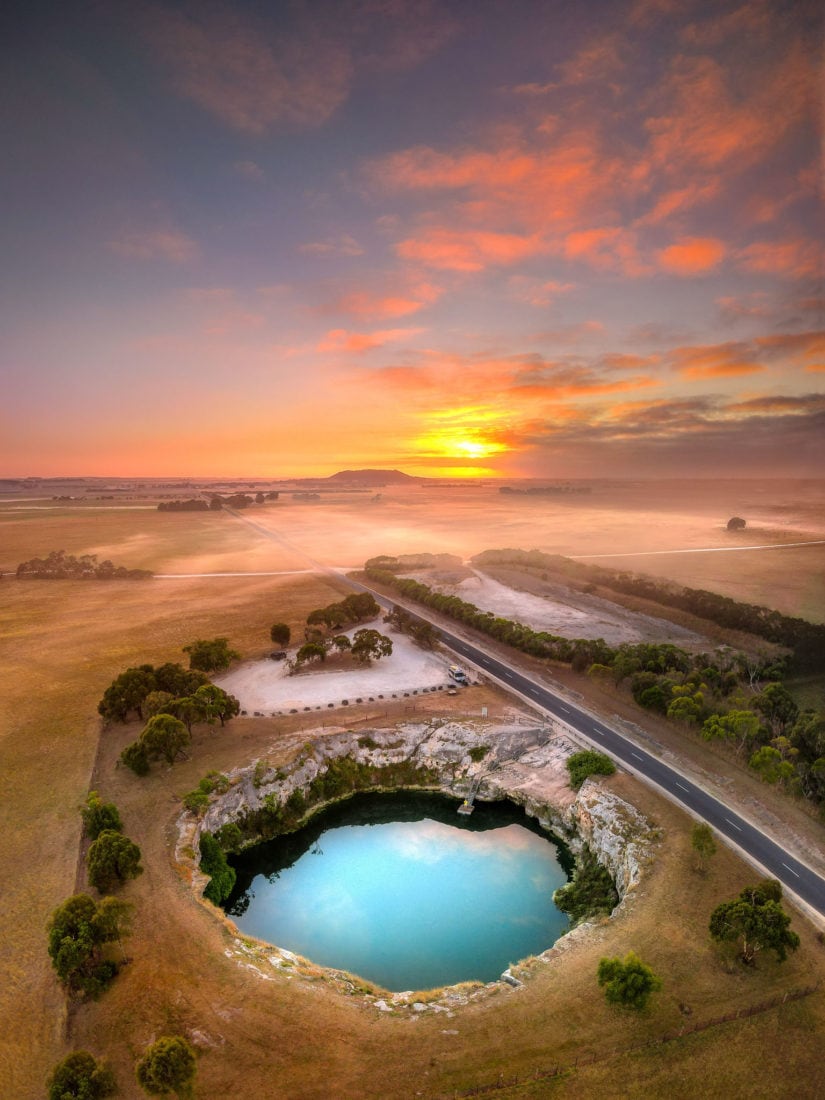
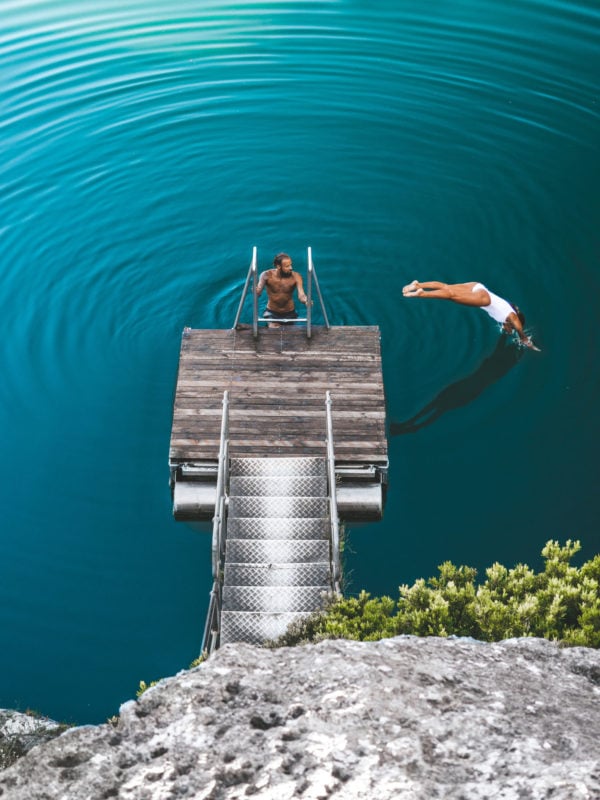
For little ones and less-confident swimmers, don’t stress – it’s still totally do-able, but just make sure you bring the right gear gear to keep everyone safe and at arm’s distance from adults at any one time. Think: life jackets, inflatables, pool noodles, and a healthy dose of common sense!
Those looking to cave dive will need to meet a CDAA Deep Cavern grade accreditation, but are likely to find a few interesting surprises while they’re down there, including an unlikely parking spot for a 1966 Morris 1100, among other little curiosities on the bottom.
While summer months tend to get busy around here (try early morning or late in the day to escape the crowds), just be mindful that you can always score it to yourself in winter. With a constant year-round water temperature of 12C it’s a refreshing dip in any season, but BYO wetsuits are usually a given - unless you’re into the ‘Icebergs’ scene!
Even though it's un-fenced and open 24 hours a day, it’s also worth noting there’s very few facilities here, with no toilets and little shade to retreat to in the midst of a hot summer’s day (just a solitary old apple tree).
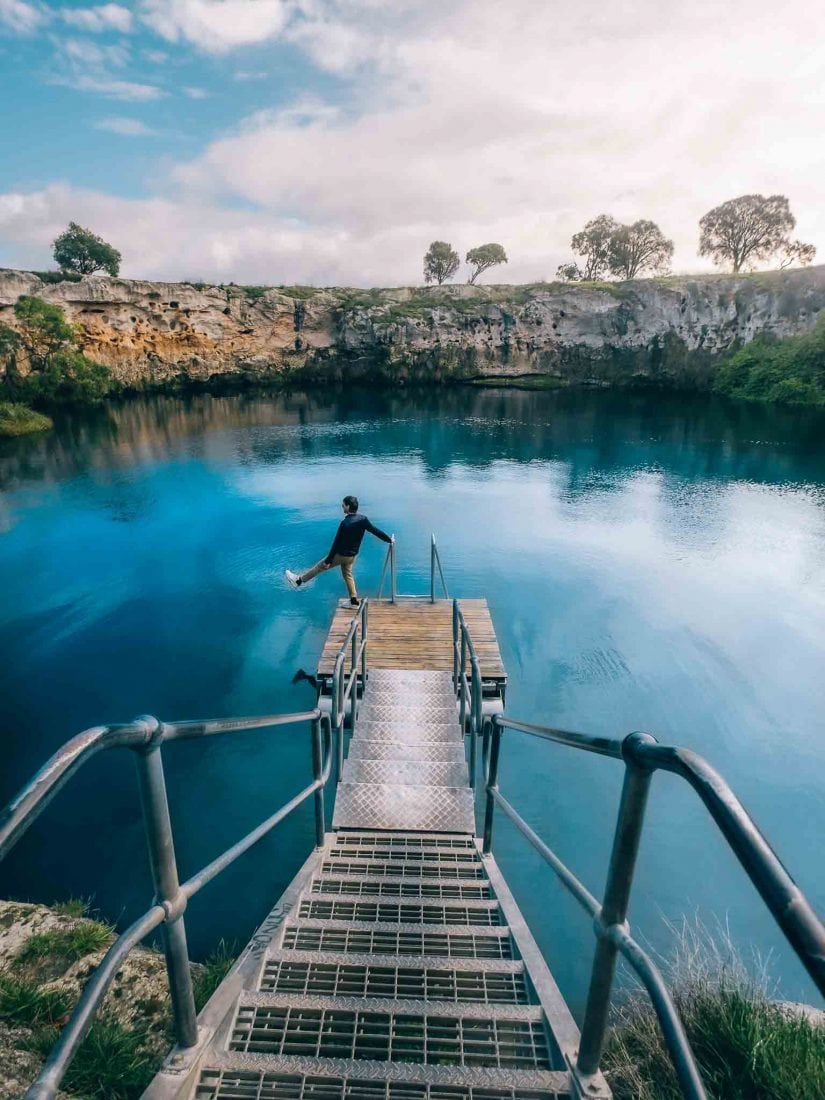
Oh, and as tempting as it may be, there’s also no camping here, so a pit stop for food and drink or perhaps even a bed at the nearby Bellum Hotel will have you well and truly covered before or after, with hearty country grub (including takeaway) and motel rooms for good measure.
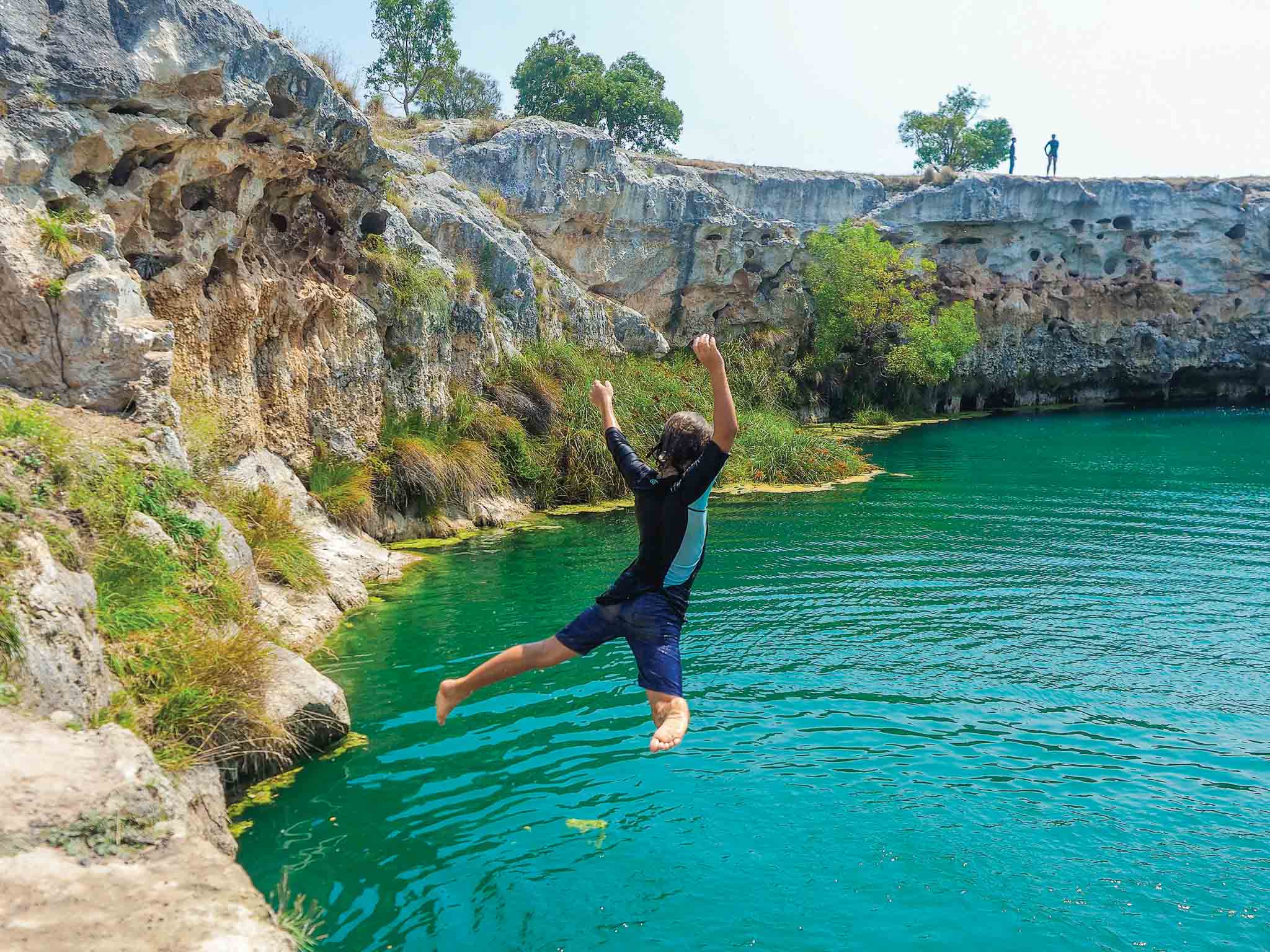
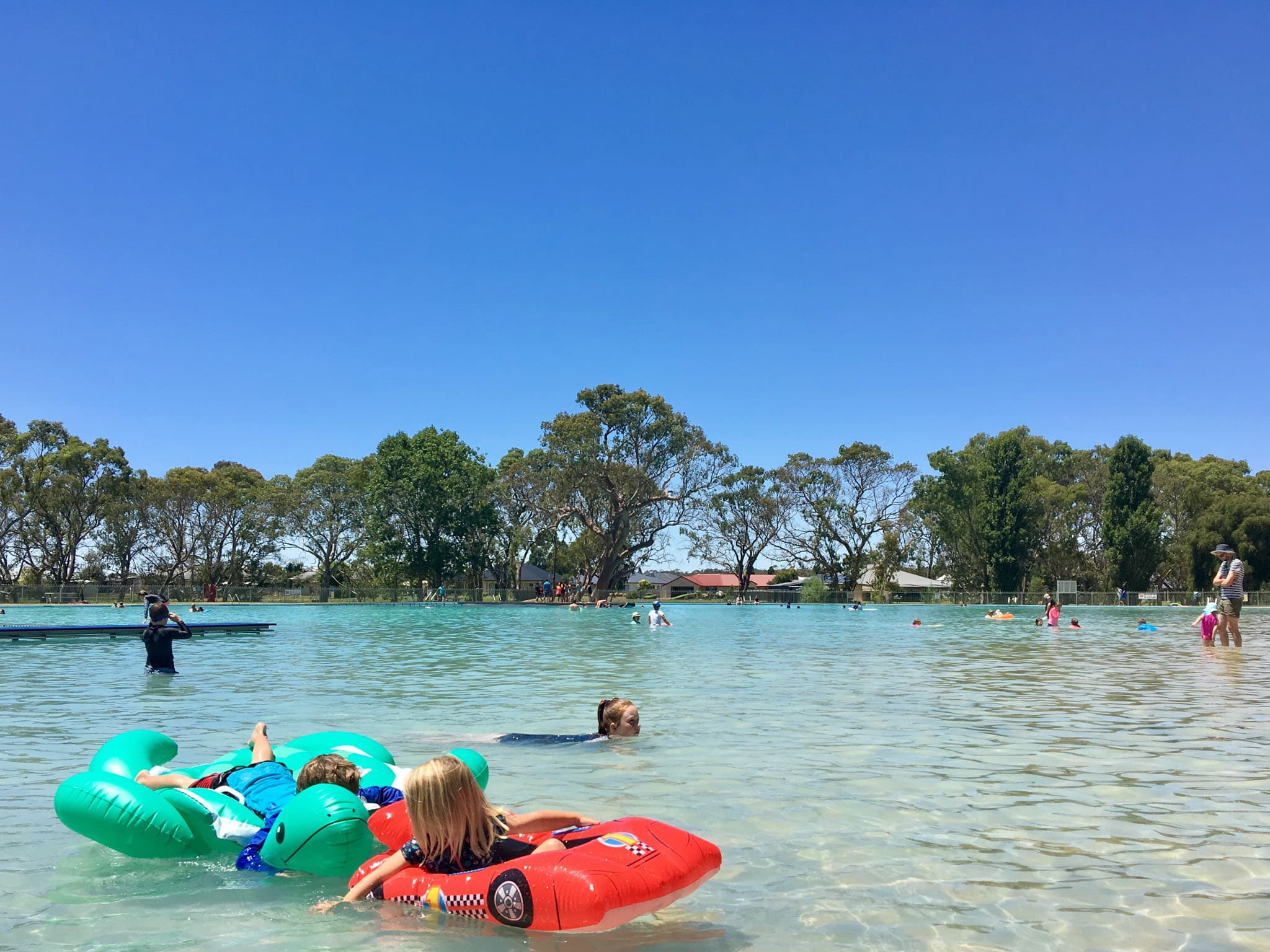
Swimming Lakes
As parents, we all know how quickly sun-kissed smiles can be replaced by two salty siblings, especially when the sand starts to stick. And how about the teen you can’t drag away from wi-fi? Perhaps you all just need a lazy day by the lake? Grab that giant inflatable flamingo and shake out your towel... These freshwater frolics have your name written all over them!
Both Naracoorte Swimming Lake and Millicent Swimming Lake (a reminder to check opening dates for these facilities) are perfect spots to dangle your toes and graze on the grass, with picnic gear a must.
Totally man-made and seven times bigger than an Olympic pool, Naracoorte Swimming Lake offers lush lawns and an ankle-deep section for toddlers, with loads of room to splash in safety - or put those trusty pool toys to good use! For added convenience there’s also an on-site playground, BBQ and kiosk, making this local icon pretty hard to leave when the heat’s on. Oh, and if those teen tummies are already rumbling when you roll into town, that’s easily fixed… Just hit up KALV & Co for a killer bacon and egg roll or wrap, or Sweet Espresso for a chilled smoothie, pizza or salad. Tick!
The cool, clear waters of Millicent Swimming Lake are equally impressive, with a shallow beach and toddler area, plus a pontoon for keen teens and energetic adults. With a number of towering trees close to the waterline, you’ll find plenty of shady spots to snooze or leaf through a book while watching your little mites splash the day away. For good eats and coffee close by, try The Shearer’s Cook for all-day-breakfasts, grazing boxes, cakes and slices, and Andy’s Bakery for sweet buns and pastries, smashing pies and seriously good coffee.
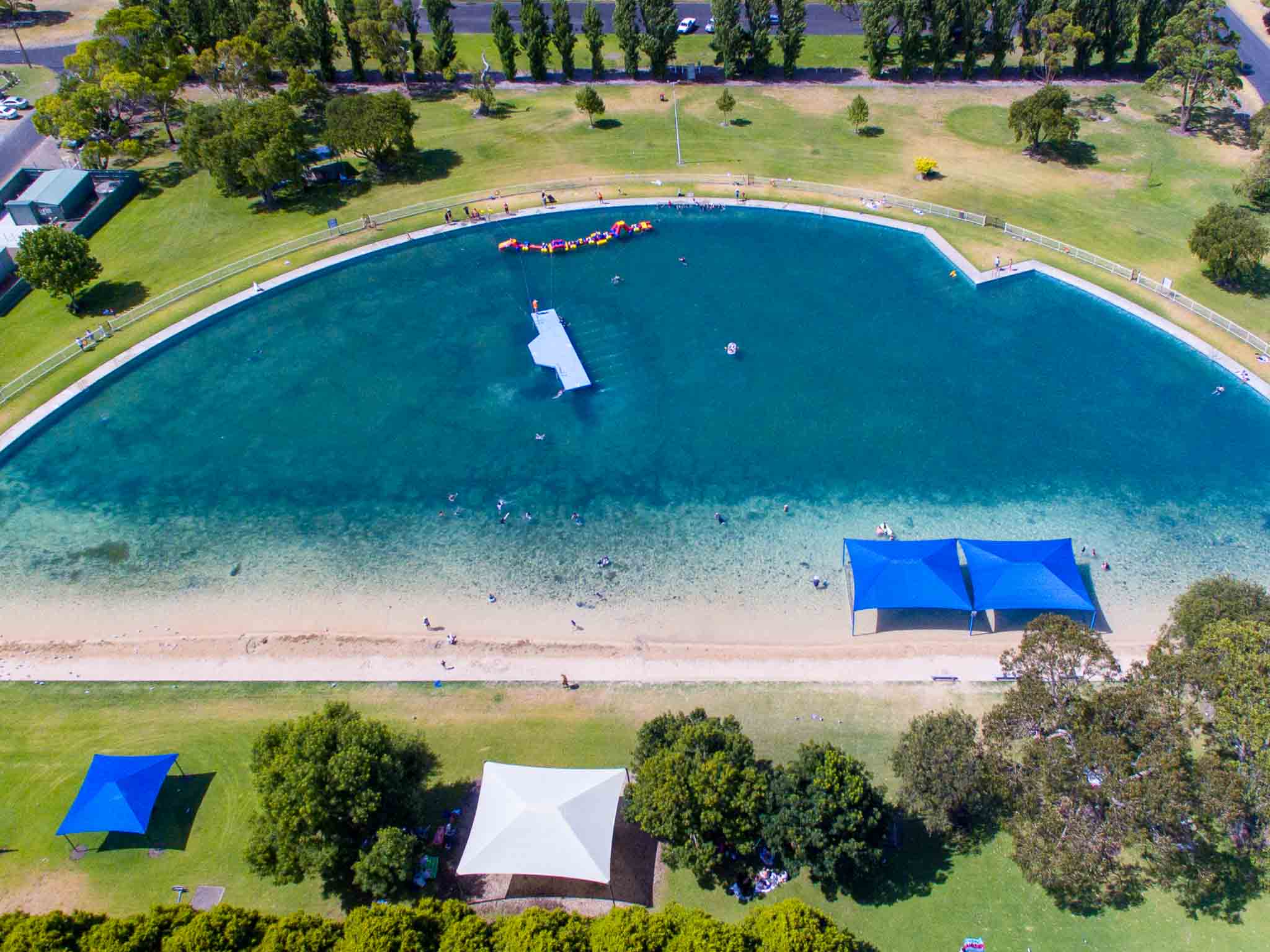
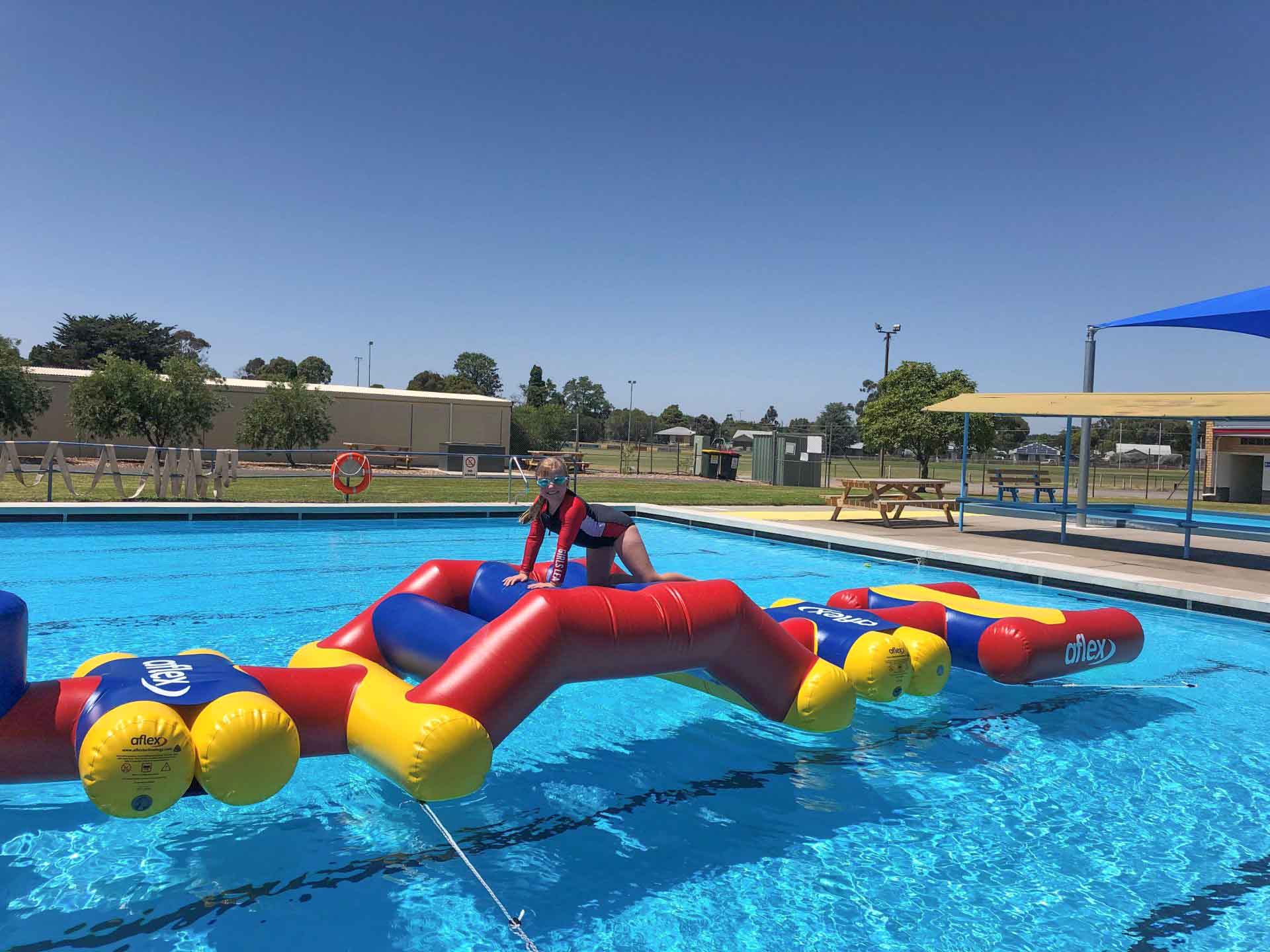
Local Swimming Pools
No doubt about it, our lakes deliver a refreshing remedy to all that salt and sand, but you’ll also be glad to know many towns are decked out with local swimming pools, making a country cool-down just as easy.
Penola’s 5-lane, 30 metre heated pool is a classy affair, with family friendly facilities including a toddler pool covered by shade sails, with good options to grab a quick bite nearby. Pull into Café Lito for a little ‘pitstop filler’ with their selection of milkshakes, coffees, cakes and bagels, or hit up Toffee & Treats of Penola for lollies, icecreams, giant lollypops and a swathe of other sugar-filled favourites.
In Nangwarry, the pool is free of charge, with shades and a BBQ to fry up a few snags in between dips. The Olympic sized Bordertown Swimming Pool is also a hit with families, with an on-site playground and plenty of shady picnic tables, plus the odd novelty water feature to keep little tackers entertained. In Keith, a 25 metre solar heated pool sits tantalisingly close to the Keith Caravan Park next door, with more great facilities, including a handy BBQ and kiosk.
Mount Gambier's Wulanda Recreation and Convention Centre is an aquatic mecca and the perfect place to escape the scorching sun.
This state of the art multipurpose facility boasts an indoor 25 metre lap pool, learn-to-swim pool, warm water program pool and a children's splash pad, as well as an outdoor 50m pool. It's easy to spend hours in this place with sporting and health club facilities also available and an onsite café serving everything from hot food to coffee and cakes.
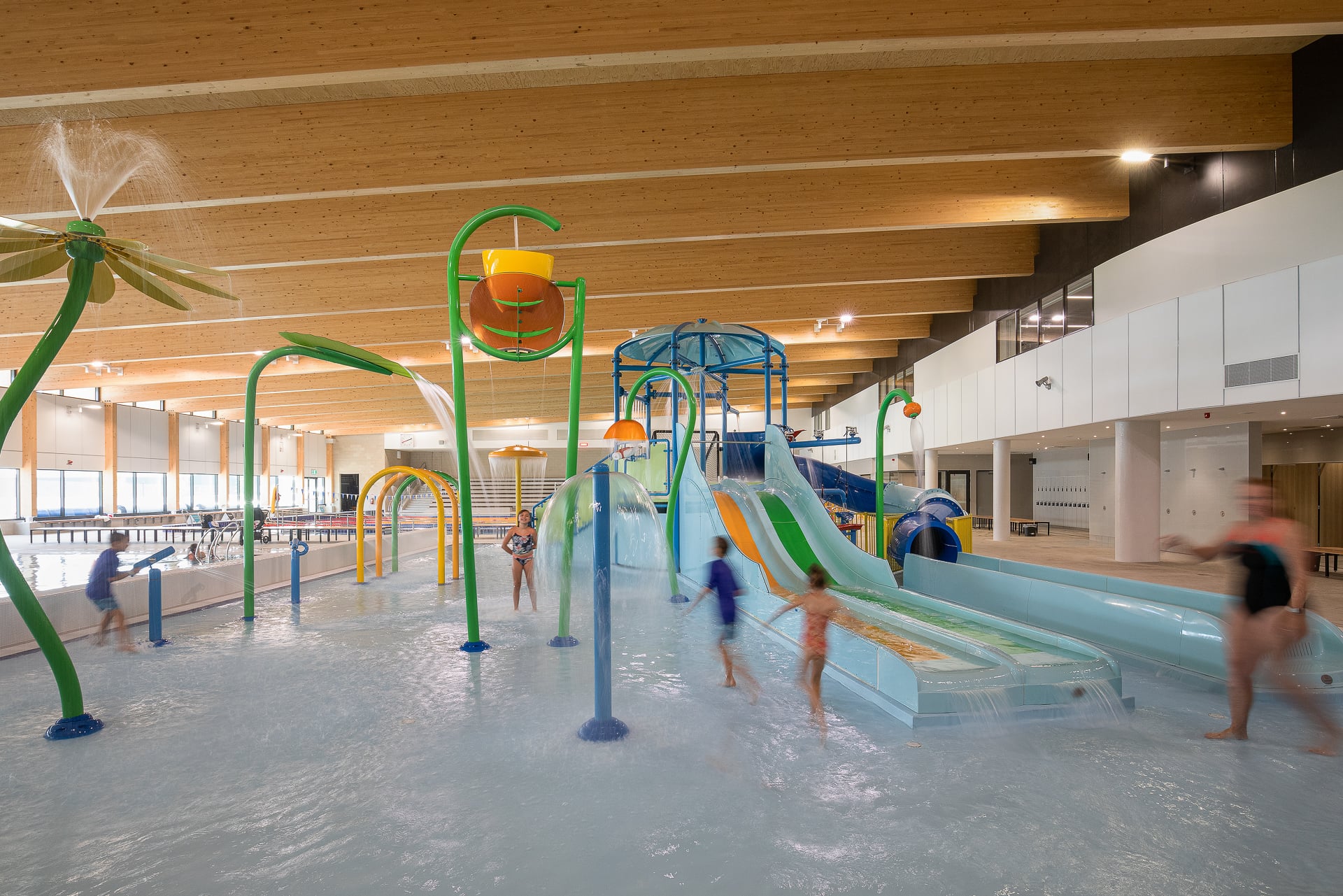
Like this story? Then we'd love you to share it with your travelling party, friends and family!